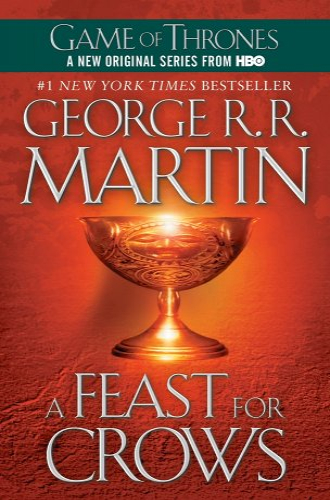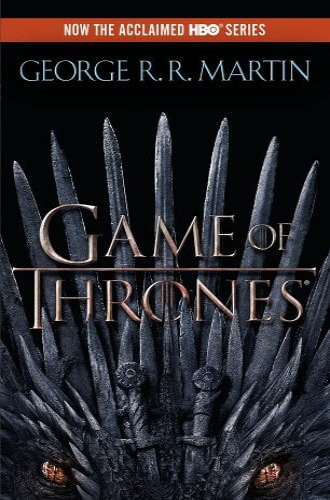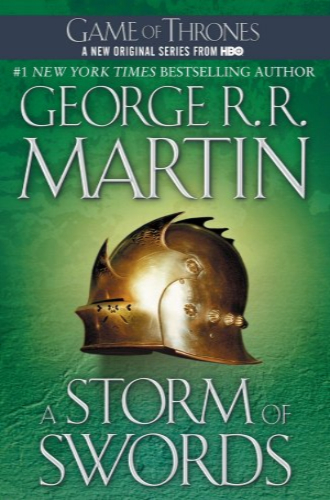A Song of Ice and Fire, colloquially known by the title of the first book in the series, Game of Thrones, stands as a colossus in modern literature and pop culture. George R.R. Martin’s epic series, with its potent mixture of political intrigue, flawed characters, and dragons, builds elaborate castles in the sandbox of classic fantasy while joyfully flinging sand in our eyes.
In reshaping the contours of epic fantasy, Martin arguably did for books what HBO’s adaptation did for TV—redefined what was conceivable. Dragons and direwolves pranced alongside discussions of power dynamics and moral ambiguity. The classic cliches of a brave prince and the damsel in distress? Martin chuckled and proceeded to turn them on their head or, occasionally, separate them from their heads entirely. His works nudged the boundaries of what fantasy could encapsulate: the grey hues of humanity, not just the stark blacks and whites.
The more people read and watched, the more commonplace catchphrases like “Winter is Coming” became. Suddenly, debating the ethics of a Red Wedding was quintessential water-cooler talk. Now, with everything said and considering the greatness of the Game of Thrones book series, let’s rank the novels from worst to best and see which one reigns supreme.
A Feast for Crows (Book 4)

A Feast for Crows, the fourth installment in George R.R. Martin’s A Song of Ice and Fire, might as well have been titled “A Feast for Debate.” This book departs from the formula of its predecessors by taking a more circuitous route through Westeros, giving the spotlight to some second-stringers and shoving fan favorites to the wings. One might say Martin played a game of “musical thrones,” and when the tune stopped, many were perplexed by who was left standing center stage.
Rather than the meaty drama of King’s Landing or the sizzling escapades of Daenerys, readers were offered a platter of Ironborn politics and the intricacies of Dorne—arguably the olives and gherkins of the Westerosi smorgasbord. Furthermore, with a narrative split that kept half the cast backstage (only to appear in the next act, A Dance with Dragons), some fans felt they were served an appetizer while craving the main course. But in defense of this oft-debated book, it’s a brave writer who, several courses into a banquet, decides to challenge the palates of his diners.
A Dance With Dragons (Book 5)

After the hors d’oeuvres of A Feast for Crows, which left many a reader feeling like a court jester juggling impatience and anticipation, A Dance With Dragons arrived with the promise of a meaty main course. It’s as if Martin decided to bring back the star performers who’d been conspicuously resting during the previous act. However, instead of the explosive jig some had hoped for, the dance was a slow, careful swing amid hazy mists and convoluted plots.
Tyrion’s journey is more of a grand tour of Essos than a direct route to Daenerys. And what about the Mother of Dragons herself? As it turns out, ruling is more complicated than conquering, and adolescent dragons are a lot like teenagers: fiery, volatile, and extremely difficult to control. There is a subtle artistry to this book, which is full of intrigue, but for those tapping their feet waiting for the tempo to pick up, it might feel a little more tedious.
A Clash of Kings (Book 2)

A Clash of Kings arrived with the swagger of a knight and the cunning of Littlefinger. After the first book set the stage (or, should we say, laid the board), the second installment went full throttle into the game. With more would-be monarchs than you can shake a dragon’s tail at, the Westeros of the second book seems less like a kingdom and more like a royal rumble. And while crowns are contested and allegiances shifted, readers are treated to a buffet of battles, betrayals, and shadowy (sometimes literally) intrigue.
And, of course, there’s the comet—that red harbinger in the sky. Is it an omen, a celestial GPS, or merely Westeros’ version of a sensational headline? This book’s true magic lies in its ability to expand the world, pulling back the curtains to reveal realms and characters hitherto unseen. And if A Game of Thrones was the appetizer that whetted our appetite, A Clash of Kings assures us that the feast has truly begun, and we’d best strap in for a rollercoaster of royal ambitions.
A Game of Thrones (Book 1)

The maiden voyage into George R.R. Martin’s labyrinthine saga, A Game of Thrones, arrived with the subtle charm of a Westerosi wedding—minus the unexpected bloodshed. This first act is no harmless foray into the fantastic; instead, it’s a rousing parade of knights, direwolves, and a hint of dragon lore here and there. As introductions go, readers meet the Starks, whose motto, “Winter is Coming,” seems less a weather forecast and more a perennial warning.
Then there’s the Lannisters, who always pay their debts but don’t quite specify in what currency. Across the sea, Daenerys Targaryen, with a name longer than her list of woes, begins her fiery ascent from pawn to power player. As plots twist tighter than a Maester’s chain and allegiances prove as fleeting as summer in the North, readers are left with a tempting choice: to furiously turn the pages or pause and savor the exquisite gameplay of the characters.
A Storm of Swords (Book 3)

A Storm of Swords blew into the literary world like a Westerosi hurricane, sparing neither man, woman, nor direwolf. If the first two books were foreplay, this is the passionate crescendo—sometimes tender, often tumultuous, and occasionally ending in tears (or blood). Book 3 gives us The Red Wedding, a bloody event that no one will ever forget. Who knew Martin’s RSVP would include chainmail under the tunic and mourning for the dance floor?
Just when you thought weddings in Westeros were eventful, along comes another nuptial festivity, adding a whole new meaning to the phrase “a killer after-party.” Moreover, Tyrion, that forever high purveyor of wit, once quipped, “A mind needs books as a sword needs a whetstone,” but readers could hardly have been prepared for how sharply this story would cut. Between daring rescues, dangerous journeys, and the odd romantic entanglement (looking at you, Jon Snow), the book ensures that every character gets their moment in the storm.
(featured image: Bantam)










Published: Nov 3, 2023 04:23 pm